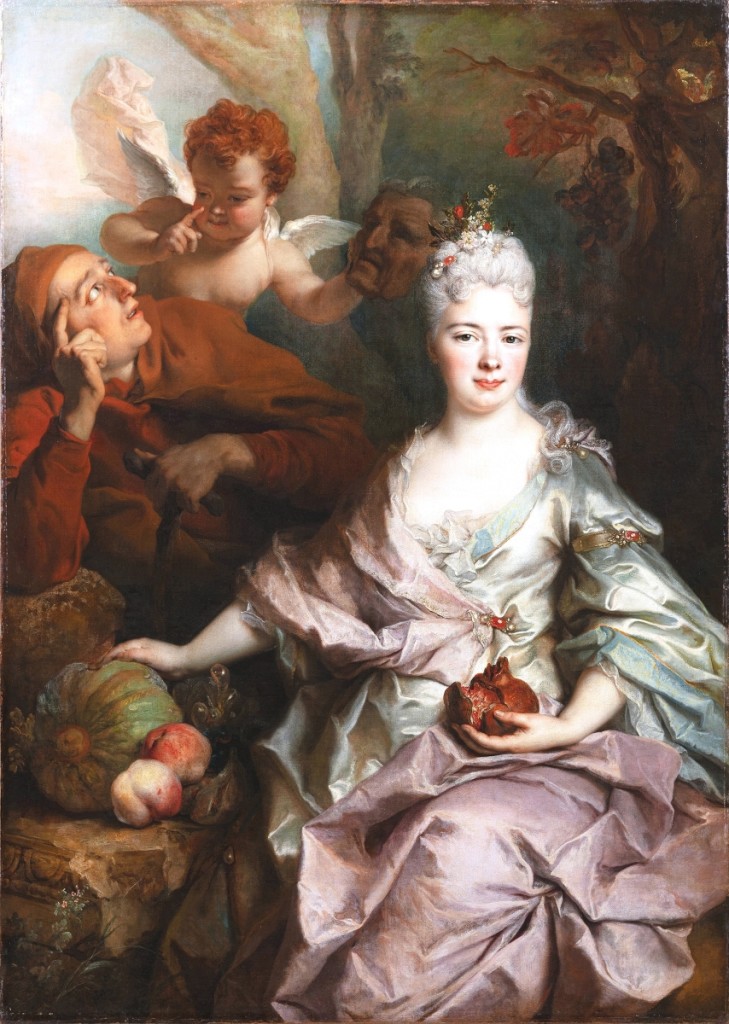The plight of artworks seized from Jewish owners by the Nazis during World War II has been glorified in movies such as The Monuments Men (2014) and Woman in Gold (2015), but the business of restituting seized works and returning them to the families of their original owners is an ongoing process. When Sotheby’s announced that it was selling a recently restituted painting – a portrait of Madame de Parabere by Nicolas de Largillière – in its upcoming Old Master Paintings and Sculpture sale on January 27, we took the opportunity to ask Calvine Harvey, Sotheby’s vice president and Old Master paintings specialist, for some insights on the restitution process as well as why the Largillière is noteworthy.
Is it rare for restituted works to be offered at auction?
It is not uncommon for restituted works to be offered at auction by the heirs to their pre-World War II owners. As institutions and private collectors continue to reassess their holdings, and new cases are brought by heirs claiming restitution of lost works, there are typically a handful of newly restituted works that come to auction each year. The number varies, but with a greater focus on collection research and history, the works that were the subject of involuntary sales or that were looted between 1933 and 1945 will continue to come to light and be rightly returned to their heirs. We have seen a steady increase in the restitution of looted artworks in recent years – partly as a result of increased awareness of wartime spoliation and partly as a result of a shift in public and private attitudes over time.
The work Sotheby’s is offering – Nicolas de Largilliere’s “Madame de Parabere” – was originally acquired by Jewish collector, Jules Strauss, whose collection was seized by the Nazis during World War II. Have other works from their collection been restituted?
The Largillière is the first painting to be successfully restituted to the heirs of Jules Strauss. A drawing by Giovanni Battista Tiepolo, Un Berger, was restituted to the heirs in 2017.
Why did the family decide to sell the painting after finally getting it back?
As is often the case with restituted works, there is a now a large group of heirs responsible for the ownership of the painting. Auction sales are a common culmination for restitution cases, as it is generally cumbersome for a group of heirs to share an artwork.
Are they selling other restituted works?
This is the only work they are selling at this time.
Is Sotheby’s involved in the restitution process? How so? What issues are involved?
In this particular case, Sotheby’s was not involved in the restitution process, but it has been our honor to work with the heirs of Jules Strauss in remembering his legacy. Sotheby’s is often involved in facilitating the restitution of looted artworks – most commonly by identifying problem works that are offered for sale by unwitting collectors and institutions and helping those owners to find common ground with the heirs to historic owners but also by proactively working with groups of Holocaust heirs to help identify their missing heritage.
Are there other restituted works in the January 27 sale?
This is the only painting in the sale that was recently restituted, but we are offering Jacob Ruisdael’s “A ruined castle gateway, probably the archway of Huis Ter Kleef near Haarlem,” that was sold to Herman Goering in 1940 and ultimately recovered by Allied Forces in 1946.
Is there a story behind the restitution of that painting?
At the time Sotheby’s sold the Ruisdael in 2011, we undertook comprehensive research into the historic ownership of the painting, working closely with the advisors to the heirs of Benjamin and Nathan Katz and with the Origins Unknown Agency (Bureau Herkomst Gezocht) in den Haag. We established that the painting was not subject to WWII-era claim and that the work was auctioned by the Dutch authorities in 1952 after they had cleared the sale with the Katz family. We have shown the remarkable history of the painting in full in our sales catalog since it is important for the art historical context of the work.
Sotheby’s press release describes the portrait of Madame de Parabere as one of the most significant works by the artist ever offered at auction; what aspects or attributes of the painting make it so special?
This work is particularly important because of how rare Largillière’s works appear at auction, especially magnificent, large-scale portraits of this quality and beauty. Largillière is renowned as one of the most significant artists of the Regency period in France – his work is in many of the most important permanent collections in the world – and this portrait specifically provides a wonderful synthesis of the hallmarks of his work, particularly his ability to capture prominent members of Parisian society with elegance and beauty within a complex and creative allegorical composition. The quality of the painting itself is outstanding, the composition wonderfully dynamic and engaging, the condition excellent, and the provenance is, as we’ve discussed, particularly important. Jules Strauss was an incredibly important collector with an exceptional eye, and it is a true honor to share his story through the sale of this painting.
-Madelia Hickman Ring

-683x1024.jpg)




